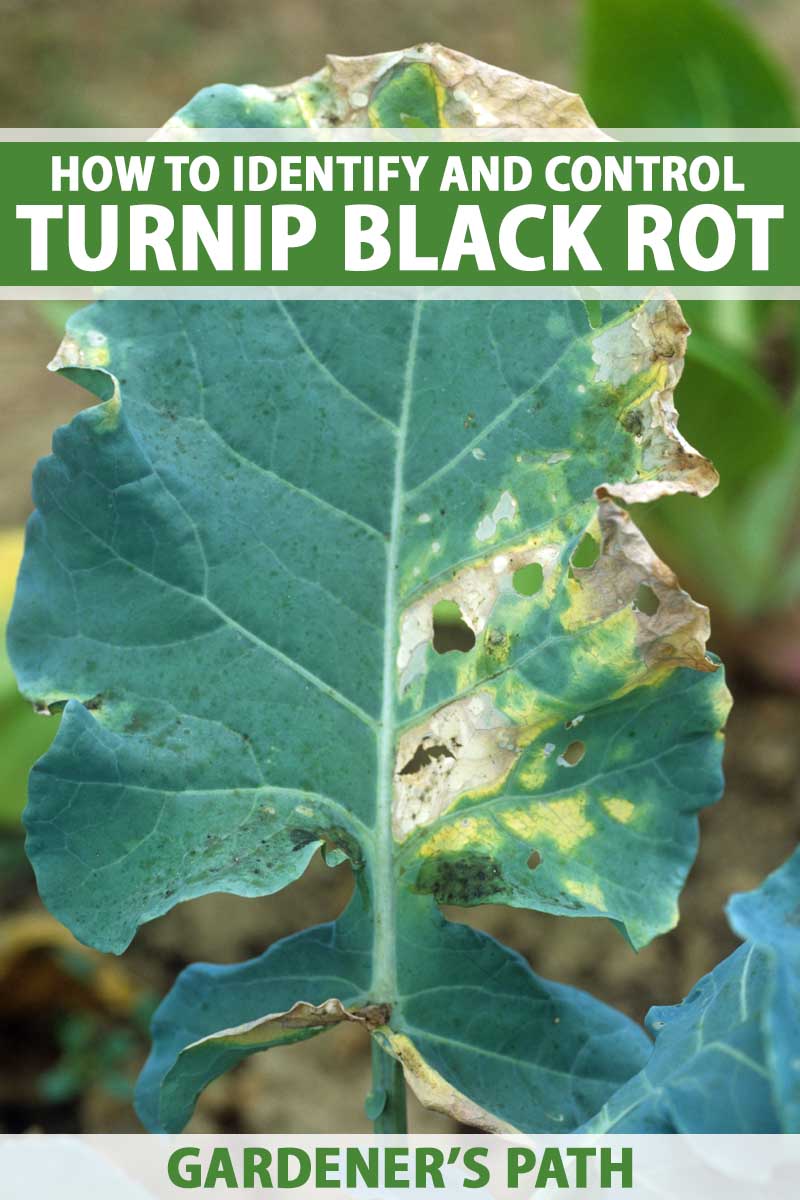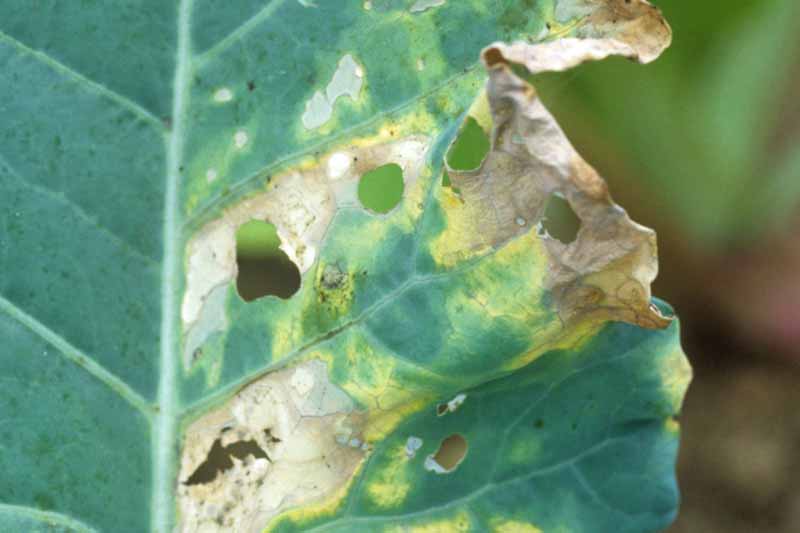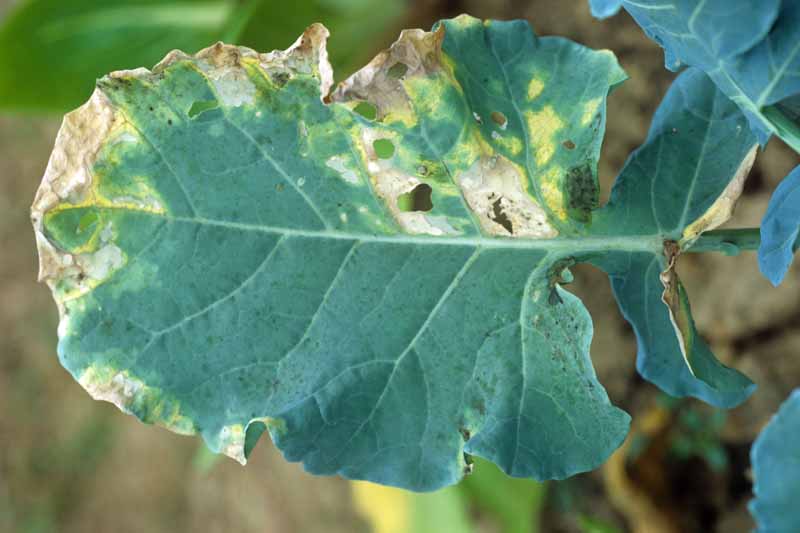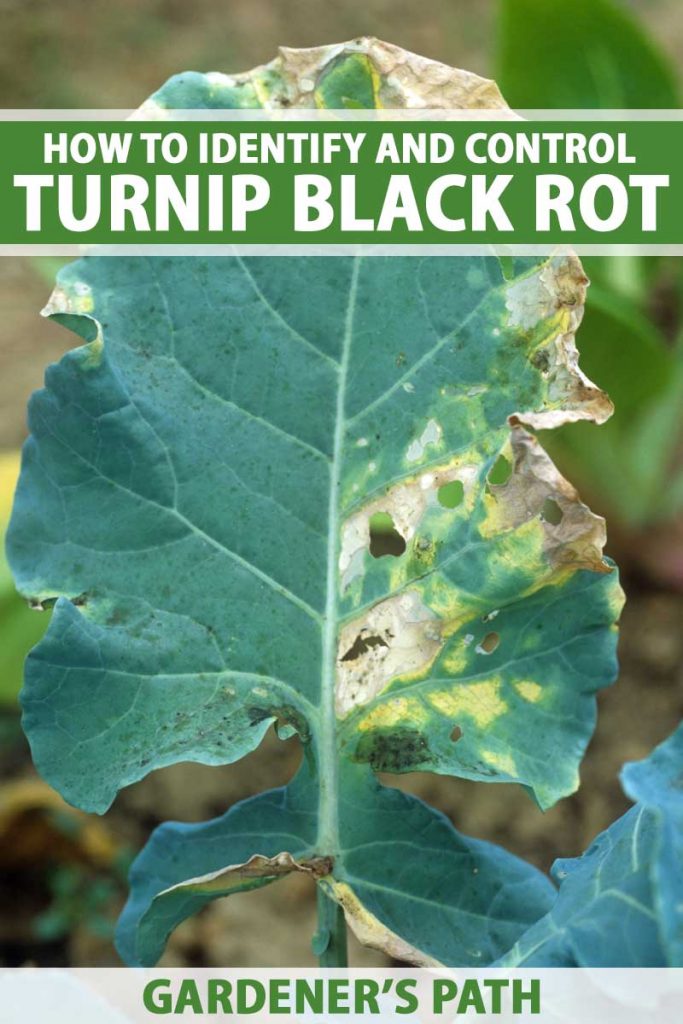Xanthomonas campestris pv. campestris
Black rot caused by the bacterium Xanthomonas campestris pv. campestris (Xcc) is a highly destructive disease of crucifers, including turnips. In fact, the disease was first identified on turnips in 1893 and remains a severe problem today.
The pathogen spreads easily between plants and can survive on infested plant material in the soil for years if buried deeply. It can affect other cole crops including close turnip relatives in species Brassica rapa such as bok choy as well as close cousins within species Brassica oleracea such as cabbage.
Since this disease takes a while to show symptoms and can spread before you know your plants are infected, prevention is critical – especially for organic growers.

We link to vendors to help you find relevant products. If you buy from one of our links, we may earn a commission.
Starting with clean seed is essential. If you can’t buy heat-treated turnip seeds, you can treat them with hot water yourself before planting.
We will describe the symptoms of this insidious disease and describe the methods you can use to prevent infection.
What You Will Learn
How Black Rot Spreads
The bacteria do not need wounds to infect a plant. They frequently enter through the water pores (hydathodes) on the margin of the leaves that exude sap in the morning.
However, any wound can provide ways for the bacteria to enter the plant. These include wounds from hail, insect feeding, or mechanical injury.
Xcc is spread so easily that experts advise against working in your fields when they are wet. The bacteria be splashed by rain or spread by wind, machinery, animals, or insects. The organism can also be disseminated in irrigation or drainage waters.
Once inside the plant, the bacteria can become systemic and infect the veins of the turnip plants.
The organism thrives in warm, humid conditions – temperatures of 75-95 F are optimal for the spread of the disease.
Xcc can survive in infected plant material in the soil for up to two months and even years if the material is deeply buried. The pathogen also survives in cruciferous weeds like wild mustard or shepherd’s purse.
If it has infected a greenhouse, Xcc can survive on organic matter, weeds, tools, benches, and even nooks and crannies.
Symptoms
It can take as long as 14 days for an infected plant to show symptoms, by which time it is too late to save the plant.
What complicates matters is that the symptoms can vary in different plants – even in different cultivars – plants of different ages and even under differing environmental factors.
Infected seedlings will be infected systemically. The first indication of infection is typically yellowing of the lower leaves. The disease will progress, causing the seedlings to prematurely drop their leaves and die.

V-shaped lesions on the edges of the leaves of mature plants are common and are characteristic for black rot. The base of the V will be along the vein.
The veins will be discolored initially, and then they will turn brown or black – hence, the name black rot.
The whole plant will die and can serve as a source of inoculum to infect other plants.
How to Prevent Black Rot
Since black rot spreads so easily once it has infested a field and is so difficult to control, preventing it from entering your crop is critical to managing this disease.

This is more easily done if you live in an area such as upstate New York that has cold winters. If you live in an area with warm winters, you have a much higher risk of maintaining the pathogen in your soil.
1. Plant Clean Seed
Since the bacteria can survive in seed under the seed coat (which means that bleach treatment won’t kill them), planting with infected seeds is a common way that growers end up with a severe black rot infection.
If you cannot find heat-treated turnip seeds, you can treat them yourself by soaking them for 15 minutes in water that is 122 F. The Ohio State University provides detailed instructions on how to do this.
2. Rotate with Non-Crucifers
Since the pathogen that causes black rot can survive on wild or cultivated crucifers and in the soil, grow a non-cruciferous crop on the land you used for your turnips for four years. This will cleanse the soil.
3. Use Clean Transplants
If you grow your own transplants, sterilize your greenhouse! Disinfect your benches and tools. If you reuse your flats, disinfect them, too. If you use compost, make sure that you didn’t use any diseased plants when you created it.
Keep the leaves of your seedlings as dry as you can, and do not trim or brush wet plants.
4. Reduce Wetness During the Growing Season
Water your plants in the morning, so that the leaves will dry while it is still light. Increase the spacing among them, and orient your rows with the prevailing winds.
Avoid sprinkler irrigation systems, since they can cause water to splash – a common way of spreading black rot.
Treating Infected Crops
If your plants do have this infection, you can try to prevent it from spreading to all of your plants by using a compound that kills bacteria.
Spray 0.5 to 7.5 pounds of copper hydroxide per acre, such as the product Kocide 3000.
Consider adding Actigard™ (acibenzolar-S-methyl) to the copper. This compound stimulates the plant’s immune system and can help to prevent uninfected plants from contracting the disease.
Prevention is the Best Control
Since black rot is such a devastating disease and can take hold without showing symptoms for up to two weeks, preventing it from becoming established is your best bet to manage this disease.
Planting clean seed is of paramount importance and keeping your plants as dry as possible and free of weeds will help to prevent black rot from becoming established in your turnip plants.
If they do get infected, you can spray a bactericidal compound like copper to prevent it from spreading further.
You should also rotate with a non-cruciferous crop for four years to prevent the disease from returning to threaten your turnips.
Have you encountered black rot in your turnips? If so, let us know how you fared in the comments.
And if you are still looking for more turnip disease indentification and treatments, see if any of these are of assistance:
© Ask the Experts, LLC. ALL RIGHTS RESERVED. See our TOS for more details.

